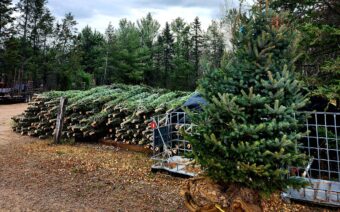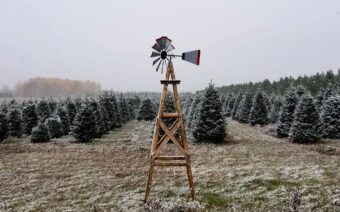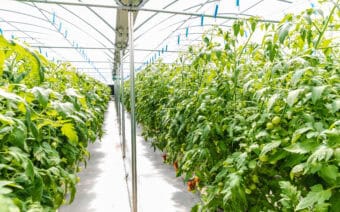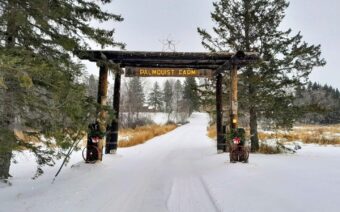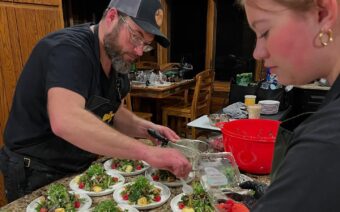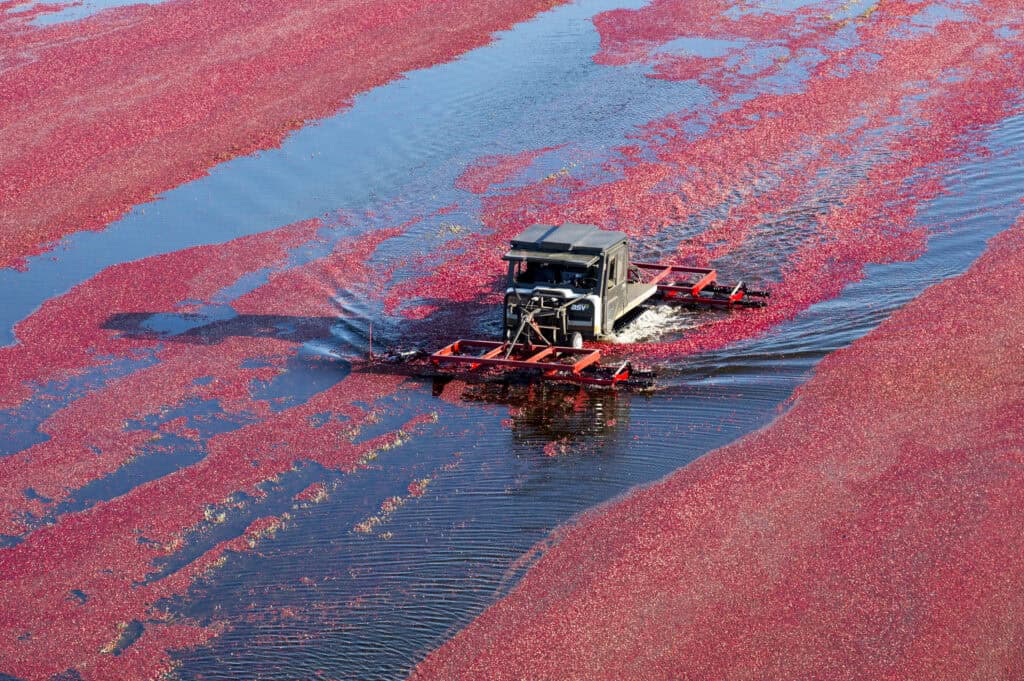
June 9, 2025
NORTH CENTRAL WISCONSIN – If cranberry producers were competitive – which, Grant Holley said, is not at all the case – Wisconsin’s nationwide win streak would make for untold agricultural bragging rights.
However, Holley said when he became executive director of the Wisconsin State Cranberry Growers Association (WSCGA), he was shocked by the industry’s harmony.
A self-described “sports person,” Holley said spending 24 years in North Carolina and the ACC (Atlantic Coast Conference) of college athletics “will teach you to kind of like the competition.”
“But coming up here, I’ve even mentioned we should have a cranberry Olympics, just for fun… but, it’s difficult, because (producers) don’t like competing against each other,” he said. “I have found that our cooperative events are much more popular than our competing (events).”
Rather than compete between states or Wisconsin counties, Holley said cranberry growers “really do act like family,” with “six, seven, eight generations” of history in the industry.
His first year with WSCGA, he said, not only taught him the dynamics between growers, government and consumers, but it also saw Wisconsin’s statewide cranberry production hit a 30th straight year as highest in the country.
“Our growers take pride in being stewards of this land and this legacy,” he said. “This year’s strong crop is a testament to their innovation, environmental care and deep-rooted dedication to producing America’s native superfruit.”
State of the tart
Holley said “you can’t get much more American-made than a cranberry,” noting it’s one of the country’s few fruits naturally found here, with the sweet, tart, seeded berries particularly prevalent in the Central Wisconsin region.
“They were here before people were, and then the indigenous tribes came through, and they found cranberries and liked them,” he said. “And then once the settlers came through, they saw that the indigenous people had cranberries, and they liked them. So, yeah, cranberries have been here well before Wisconsin was Wisconsin.”
The name of the fruit, Holley said, has “e”-volved through the years.
“People thought that the shape of it looked like a crane, so originally they were ‘crane berries,’” he said. “Apparently, that’s too long for Americans to say… Somebody along the line said, ‘You know what? That “e” – that’s just one (letter) too many.’”
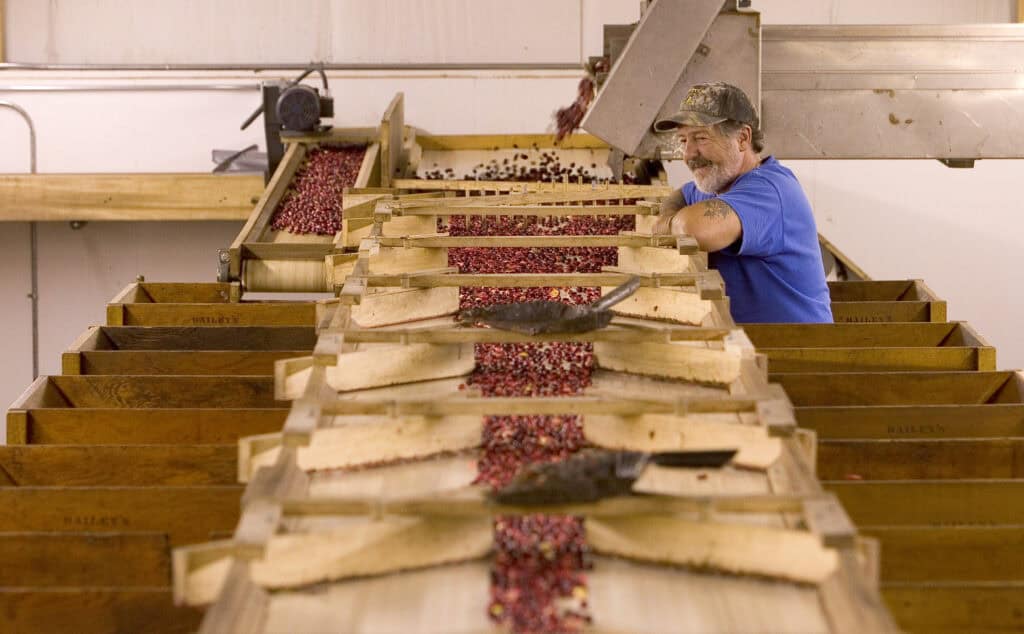
The greatest industry change, Holley said, has been the increase in the amount of fruit produced.
According to the Wisconsin Cranberry Board’s (WCB) 2024 final harvest report, last year, Wisconsin produced 6.01 million barrels of cranberries (with each barrel equaling 100 pounds), grown on more than 25,000 acres across 19 counties by more than 250 licensed growers.
WSCGA reports cranberries remain one of the top fruit crops in Wisconsin – where, in 2004, they were named the state’s official fruit – “supporting nearly 4,000 jobs and contributing nearly $1 billion annually to the state’s economy.”
Per WCB, the state’s top five cranberry-producing counties in 2024 were:
- Wood County – 6,750 acres harvested; 1,881,277 barrels; representing approximately 30.8% of Wisconsin’s total output
- Monroe County – 3,714 acres harvested; 1,088,701 barrels; 17.9%
- Juneau County – 2,882 acres harvested; 1,031,373 barrels; 17.0%
- Jackson County – 7,237 acres harvested; 909,833 barrels; 14.9%
- Vilas County – 812 acres harvested; 276,820 barrels; 4.5%
Holley said after Wisconsin – which produced nearly two-thirds of all America’s cranberries – “there’s no real clear second- or third-(place)” state in terms of production.
“You have Massachusetts and New Jersey, who has been doing cranberries for as long as Wisconsin has been doing cranberries as well – and they work just as hard as we do, and they’re just as proud of what we do here inside of Wisconsin – (but) they have less land, (whereas) we can expand out a little bit more,” he said.
Methodology, as well as cultivation and harvest technology, Holley said, have continued to evolve across the industry – and without a competitive mindset, he said “we share techniques all the time.”
For example, he said, whereas Wisconsin’s cranberry marshes have the benefit of icing over before they’re drained for the winter – keeping them “nice and warm in their ice caves over the wintertime,” as well as allowing trucks to drive out and spread sand to aid the marshes’ growth in spring – other states’ climates call for alternative methods.
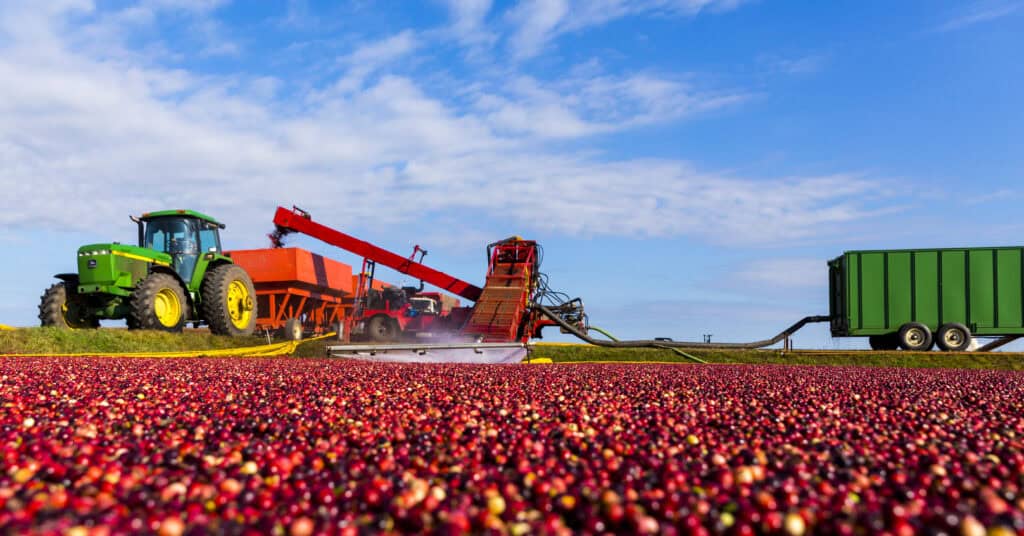
In Wisconsin, Holley said “we’re spoiled – we get ice almost every winter” – key word, he said, being “almost.”
When a recent, relatively warm winter forced Wisconsin growers to adapt, he said other states’ growers were all too willing to advise.
“Folks from Massachusetts, New Jersey, Washington state, Oregon – they very much volunteered to help us understand, grow and evolve,” he said. “That’s just the kind of world that we’re living in right now.”
Holley said in contemporary agriculture – cranberries and beyond – there’s a special camaraderie.
“There are so many variables out there today that will keep a farmer awake – the last place you need to worry is within your own group,” he said. “These guys realize that, and they know that over the years, they have had to depend on each other through good times and bad, and they don’t forget it. This is why they’re so strong. And it’s (this way with all) cranberry (growers), but it’s also so much of agriculture within all of Wisconsin. I wasn’t born here, but, man, I’ve got to tell you – you guys have something special, and I hope you realize that.”
Fruit loop
Though enjoyment of cranberries was not a prerequisite for his position with WSCGA, Holley said, “as a matter of fact, they’ve actually always been part of my diet.”
“I’ve been a fan of cranberries for the longest time,” he said. “It almost feels full circle, because it takes me back to my childhood.”
Holley said he grew up in the backwoods of West Virginia – “and when I mean backwoods, man, I mean backwoods” – where, at the time, it was difficult to get cranberries.
“But when my grandmother did (get cranberries), she would use them to stuff chickens and turkeys, and if we could get a pheasant from the land, we would do that as well,” he said. “That was, bar none, my most favorite meal that you could possibly imagine.”
It wasn’t just his lifelong appreciation for the fruit that led him to become WSCGA’s executive director, he said, rather, it was the result of a winding yet rewarding professional path.
Holley said his career started as a high school biology teacher in North Carolina, before he became an executive director/department head at North Carolina State University, where he was “working within education, agricultural education, international education and was building several programs.”

That position, he said, led to him becoming chief operating officer of an international company, allowing him “to work with these same programs, with multiple universities… with about 14 different countries, again, in agriculture, some medicine, pharmacy, as well as education.”
Deciding to leave North Carolina – “mostly (due to) climate; I wanted to have my four seasons back again” – Holley said he pivoted to the nonprofit sector, working in the medical/pharmacy industry in Waukesha.
Though he said he found success across industries and sectors, he still hadn’t found his best fit, when a scan of Wisconsin’s job opportunities yielded a position with another nonprofit, WSCGA.
“I saw the cranberry position open, and I remembered I used to be very happy when I worked with agriculture, and I thought, ‘I’m going to look into this,’” he said.
Holley said he reached out to the association, and on Christmas Eve, received a reply from its then-president.
“(He told me) ‘I’m going to spend a little bit of time with my family, but can I call you after the holidays?’” he said. “I thought that would be sometime in January. He called me Dec. 26. He was my first window into the (cranberry) industry, with incredibly dedicated people.”
Beginning the extensive, multiple-month interview process, Holley said he was thoroughly impressed by the passion of those he met in the cranberry industry, and resolved it was where he belonged.
“Well before I got the offer, I was sold,” he said. “I kept telling them, ‘This is my next job – you just haven’t realized it yet.’”
WSCGA, Holley said, takes such a job search exceedingly seriously.
“Most of them are fifth-, sixth- and seventh-generation farmers, and job No. 1 is to be able to make sure that the sixth-, seventh-, eighth-generation farmers – if they so choose – can be there,” he said. “So, they pay very close attention so that they will not be the generation that messes things up. I’ve heard that on a number of occasions.”
Holley said it was ultimately his mix of experience across academia, industries and nonprofits that led to his selection as executive director.
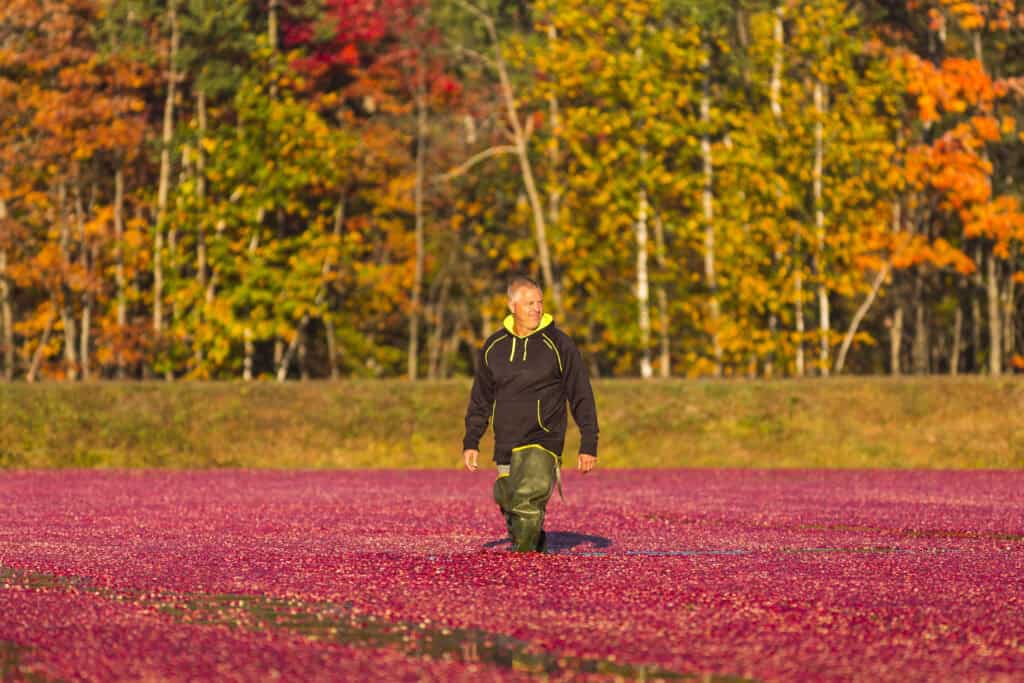
“I kept telling folks I was never hired, I was adopted,” he said. “It’s just a reflection of that family that I got adopted into.”
Holley said he feels perfectly at home with WSCGA, despite lacking specific experience with cranberries.
“Someone coming in without a cranberry background was a good move for them because they know cranberries, they’ve lived it their entire lives, there are multiple generations inside of it – but I would bring in newer ideas on how to modernize their process (and) work with state agencies, federal groups and policy makers,” he said. “And I’ve had experience with all of that and all three settings within academia, industry, nonprofit, and that means I sort of see their perspectives to begin with.”
Holley said his background makes him adept at working with everyone from government officials to the Universities of Wisconsin, while he’s picked up the industry’s specifics over his first year in the position.
“(When I started), I would not have known all of the anatomical structures of the cranberry plant,” he said. “I do now.”
As he’s done across industries throughout his career, Holley said it’s his job to promote forward-thinking and evolution.
His own position, he said, is likewise ever-changing – “blessedly, there is no such thing as an average day.”
“We do a little bit of everything on any given day,” he said. “I could dress in my suit, go into Madison and pontificate upon the impact of cranberries inside of Wisconsin. Or, I can put on my Carhartt and my boots and I can dip down inside of the marshes and see what our researchers and growers are doing, literally on the soil scale.”
The position with WSCGA, Holley said, is “very much my dream job.”
“Working with this group is… I haven’t always made the best decisions in my life, (but) this was easily one of the best,” he said. “I definitely drank that cranberry punch.”
‘Berry’ optimistic
Even with Wisconsin’s 30 straight years as the country’s top cranberry producer, Holley said between economic and climate uncertainty, WSCGA doesn’t take its success for granted.
“You never know what the future holds,” he said. “I don’t mean to jinx anything, but at this point in time, I see cranberries having a very bright future.”
In Wisconsin, Holley said there are policymakers, advocacy groups and the growers themselves, who are “incredibly supportive of the industry,” as are the communities surrounding cranberry marshes.
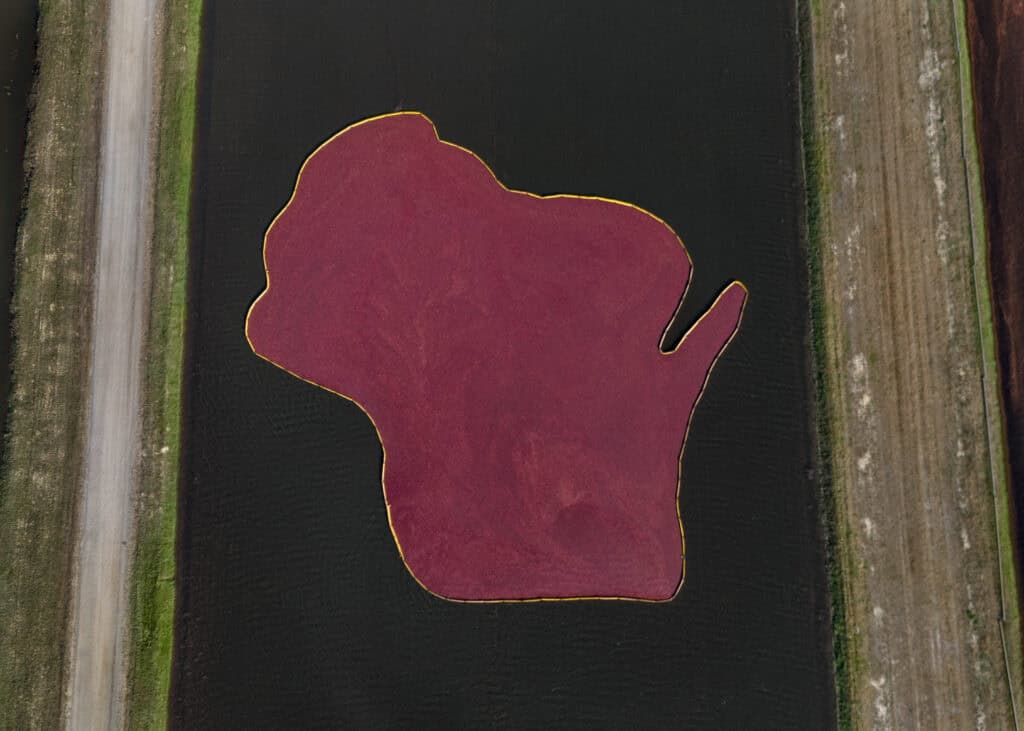
“And you have growers who are investing and evolving and are paying very close attention to how their environment changes, whether that’s economic or the actual environment,” he said. “I think the future looks very bright for Wisconsin cranberries, and we will only continue to grow.”
Holley said his optimism derives from advancements in machinery, growing techniques, blends of cranberry species, pest control and support land – seven to 10 acres of natural wetland per acre of cranberry marsh – as well as increased conservation and sustainability practices from growers.
“They take giant strides to make sure they preserve (the land),” he said. “Not just for their cranberries and for their industry, but because they live there, forever, and they hope to keep that land in their families forever more.”
In joining WSCGA, Holley said he understood the high stakes of his role.
“Is it pressure? Is it excitement?” he said. “The answer is yes, it’s both, very much. For more than 30 years, (Wisconsin) has been the leading producer inside of the United States, and honestly, we feel that we’re going to go for at least another 30 more,” he said. “And there is a pressure, because many folks who have come before – this was their lives, and they put down the structure. They did the bones of what we’re building on.”
On one hand, Holley said he’s fond of posing to his team, “what does it look like when Wisconsin is 80% of the nation’s cranberry (production)?”
On the other, he said it’s still a “little intimidating, because being the leading producer is also a responsibility.”
“And we are not just the leading producer – we are by far the leading producer,” he said. “So, now, if we made a mistake or we have a challenge – granted, losing a marsh is something that keeps people awake at night – but we would also be losing a cornerstone of what makes Wisconsin, Wisconsin, and what makes America, America. And as idealistic as that sounds, that is very much on the minds of our farmers.”
Above all, Holley said it’s the state’s cranberry growers, and their reverence for the iconic fruit they produce, who give him confidence.
“They take it very, very seriously,” he said. “They are so proud to be a symbol of Wisconsin.”
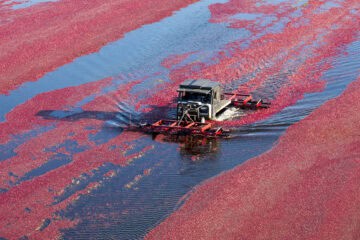 Catch us if you ‘cran’
Catch us if you ‘cran’ Emily Jacobson: ‘I’m meant to do this forever’
Emily Jacobson: ‘I’m meant to do this forever’


